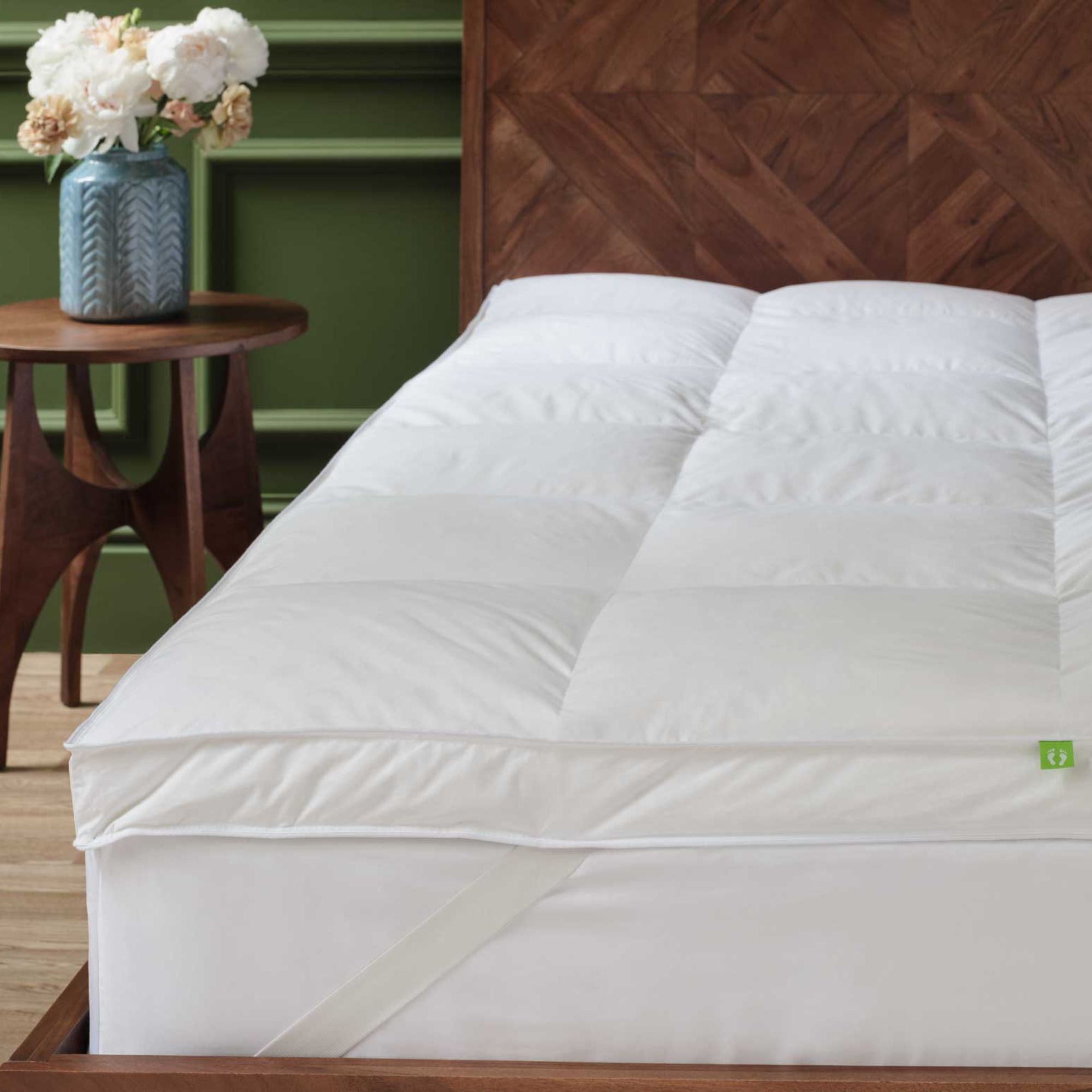Mattress topper types explained: your expert guide
Here are the pros and cons of the major mattress topper types, from plush pillow tops to firm foam, according to our team of expert testers
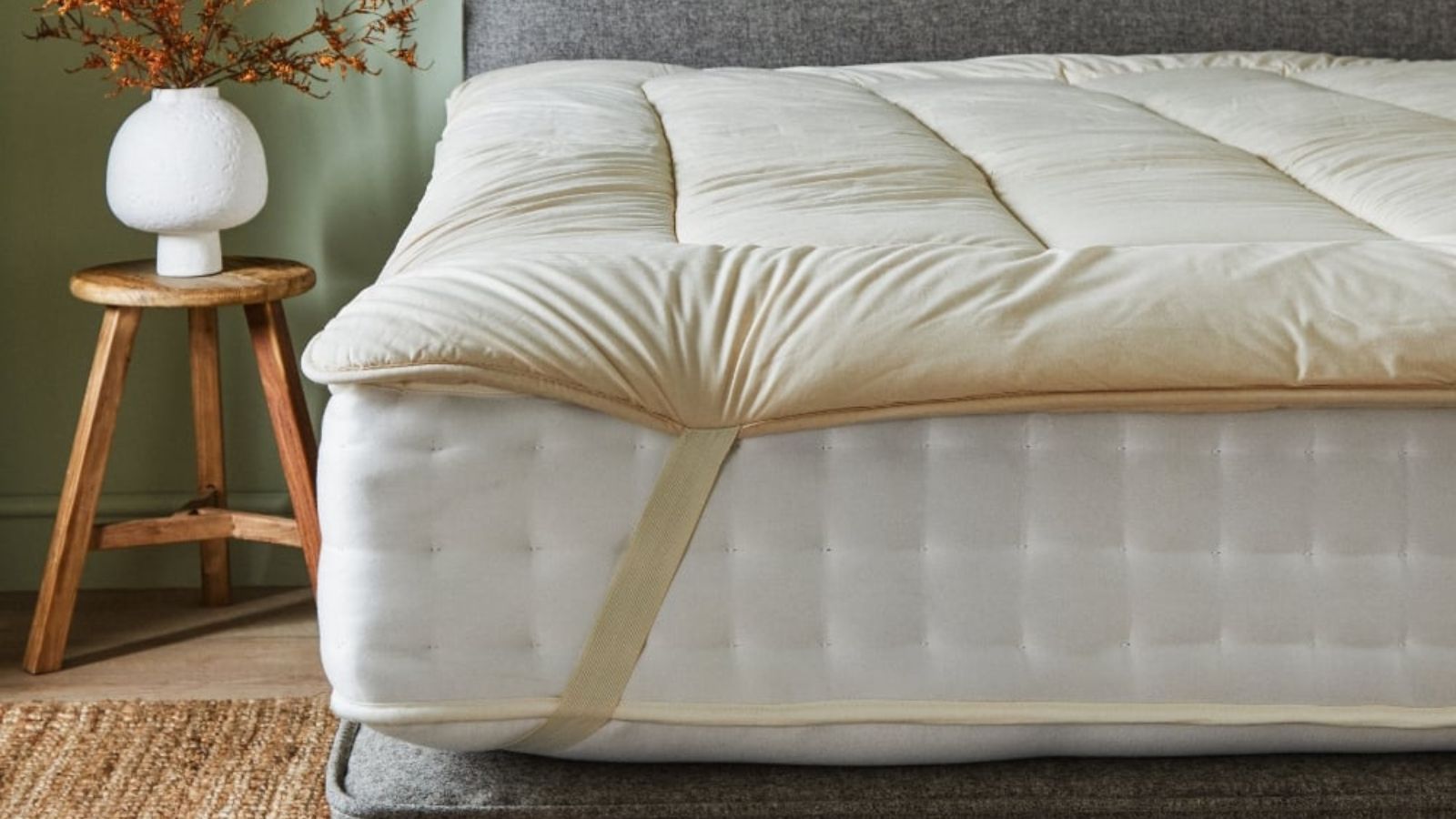

There are three major mattress topper types: memory foam; latex; and featherbed. If you've ever tried shopping for a mattress topper, whether online or in-store, then you will have come across these terms, but you might not feel totally clear on what they mean.
That's where I come in. As H&G's resident Sleep Editor, I lead a team of expert testers in the search to find the world's best mattress toppers. Together, we've tested 12 toppers, from plush pillow tops to firm foam models, so I've picked all the pros and cons of the different mattress topper types. I can tell you everything from how they feel to what they cost and where to buy them.
I've included commentary from my fellow mattress testers to give you the fullest possible picture of what it might be like to sleep on a particular topper. Follow my mattress topper buying rules and you won't go far wrong.
Mattress topper types explained: the pros and cons
Admittedly, prices vary depending on the materials, but you should expend to spend somewhere between $150 and $450 to get a decent mattress topper in a Queen size. With that said, you could always try to save some money in the mattress sales.
Memory foam
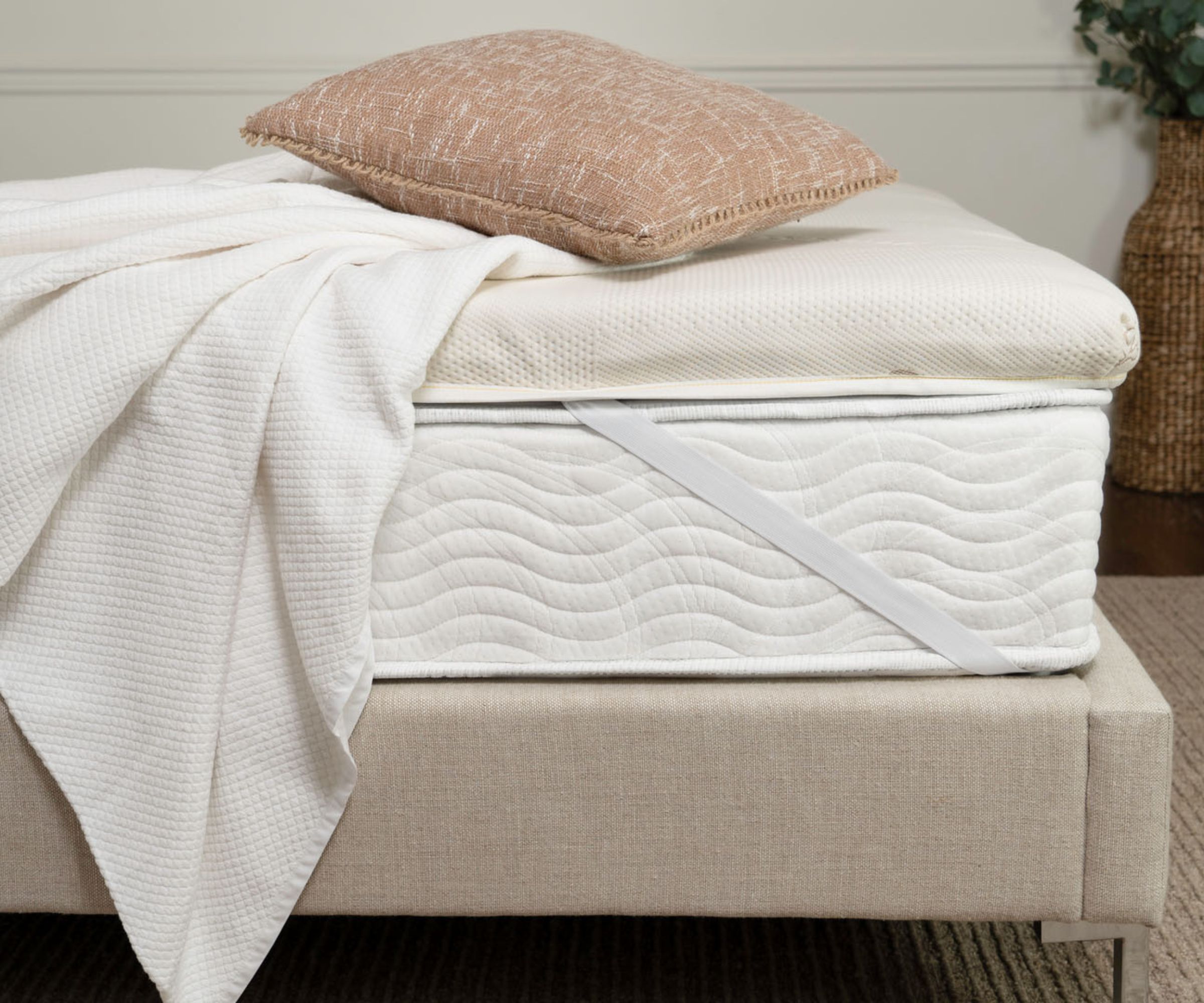
Best for: firm, inflexible mattresses; side sleepers and anyone who suffers from chronic pain
Pros: plush comfort; pressure relief; motion isolation
Cons: less suitable for hot sleepers; less durable
Before we begin, it always helps to define our terms. Memory foam, also known as viscoelastic foam, is a variant of polyurethane. It's designed to respond to the shape, size, and temperature of the individual sleeper, molding to meet their needs.
How memory foam feels depends on the density of the foam, measured in pounds per cubic foot. All you need to know is that higher-density foam feels firm and solid (the sort of thing you find in a mattress base layer), while lower-density foam feels soft and cushy (more commonly found in mattress comfort layers). Don't worry if you don't recognize some of these words: you can always cross-reference against my mattress jargon buster.
Your average memory foam mattress topper is filled with lower-density foam, designed to soften up firm, inflexible mattresses. 'As a side sleeper, I appreciate the contouring comfort and pressure relief of memory foam,' says expert tester, Louise Oliphant. 'It takes the weight off my hips to ease my lower back pain.' Memory foam is known for its excellent motion isolation, so it's a good choice for couples and light sleepers.
There's an old adage that memory foam traps heat. That's true of earlier iterations, but modern manufacturers have found plenty of ways to incorporate cooling technology into their memory foam mattress toppers.
The blessing and the curse of memory foam is its propensity to develop indents and impressions. That's what gives you the feeling of body contouring, but it also ages the material. You can't expect to get more than a few good years out of a memory foam mattress topper, while latex products could last you as long as 20 years.
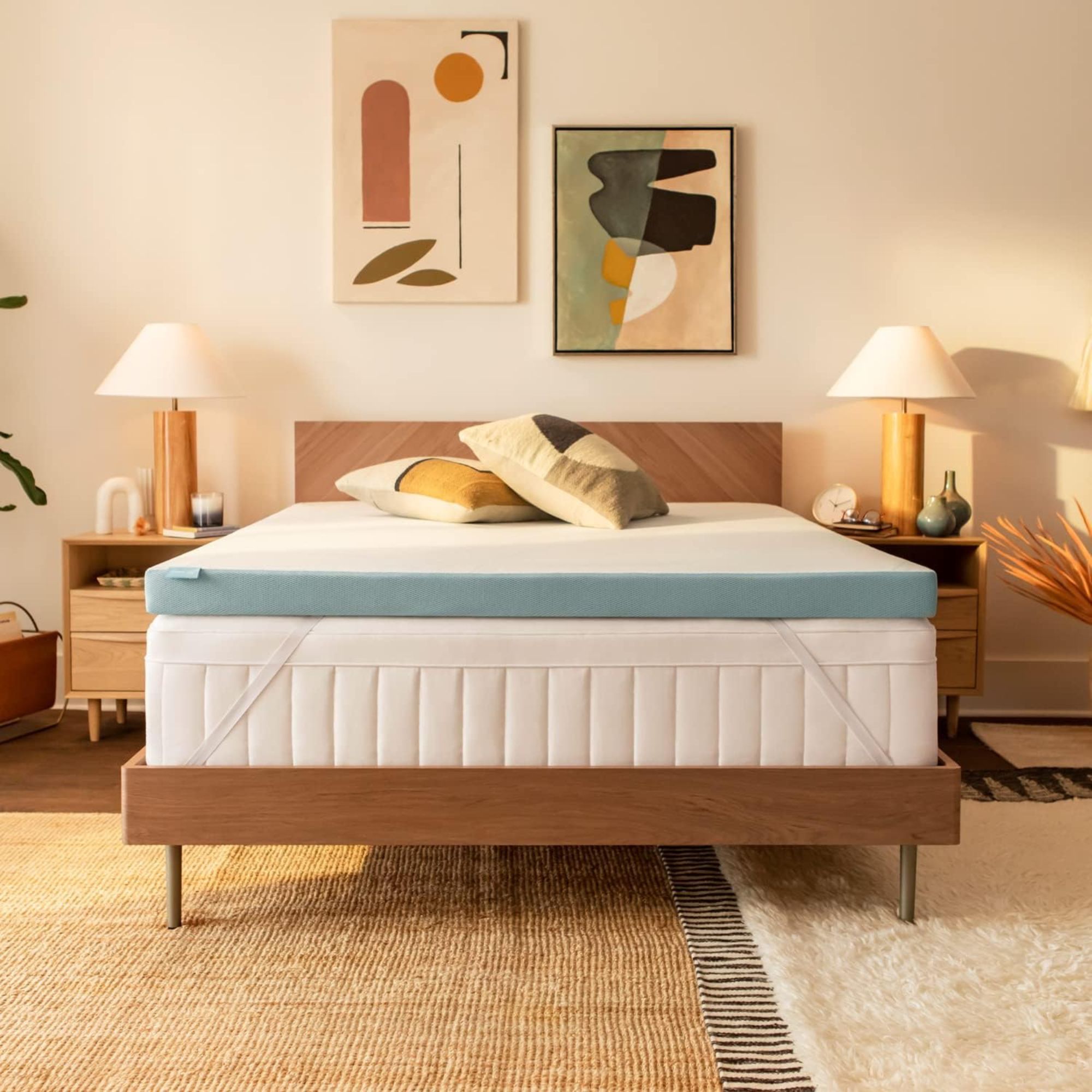
This is our reigning champion for the title of 'best mattress topper', with high scores across the board for pressure relief, thermoregulation, motion isolation, and edge support. Sometimes, I hesitate to recommend the Tempur-Adapt Tempur-Topper because it's so expensive. I feel much more confident with our 40% discount: use TOPPERS40 to save.
You can find more detail in our Tempur-Adapt Tempur-Topper review.
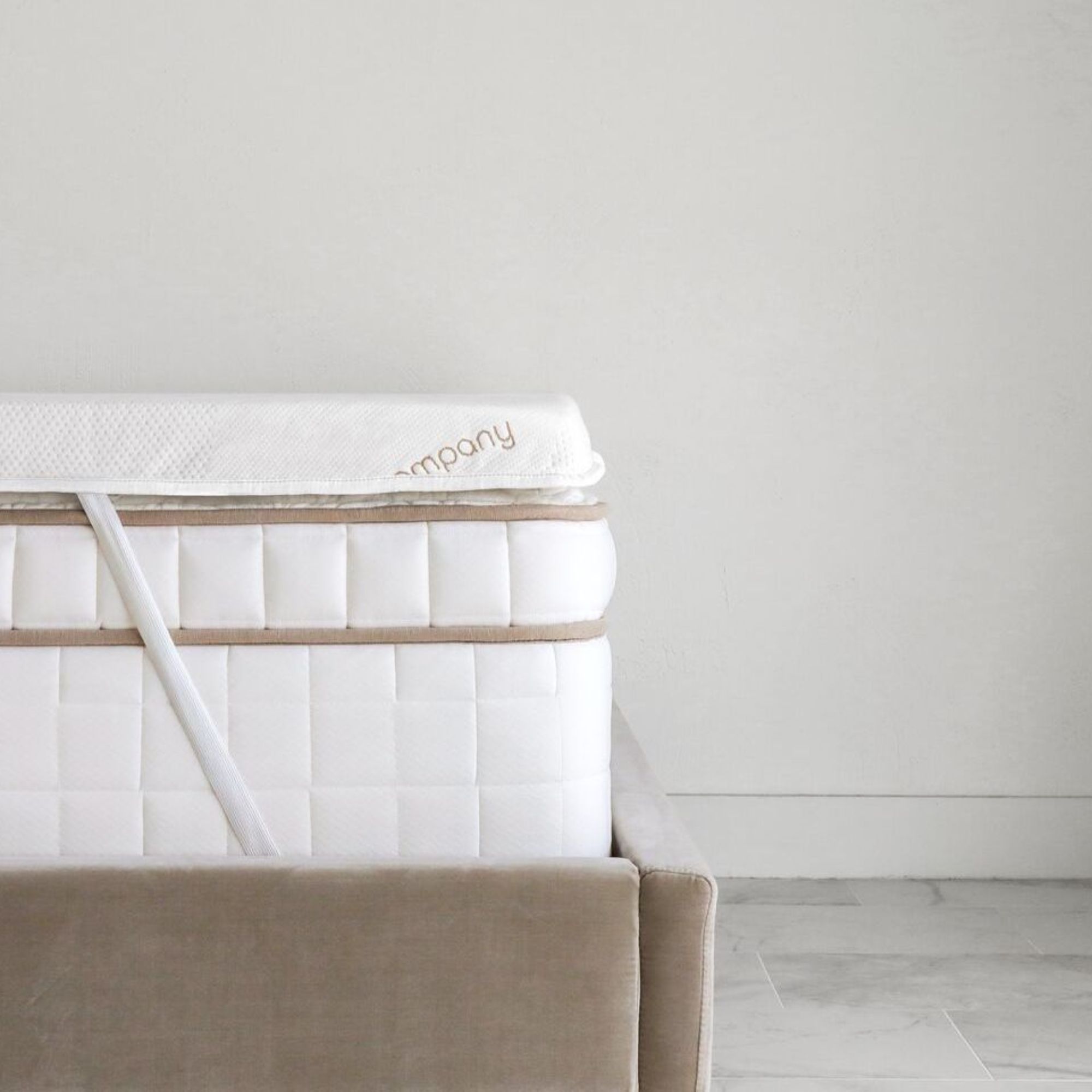
'This mattress topper made an immediate improvement to the look and feel of my bed,' says expert tester Kaitlin Madden. As a hot sleeper, Kaitlin appreciated the thermal conductivity of graphite, which carried excess body heat away from her body and out of her bed to keep her cool in the summer.
You can find more detail in our Saatva Graphite Mattress Topper review.
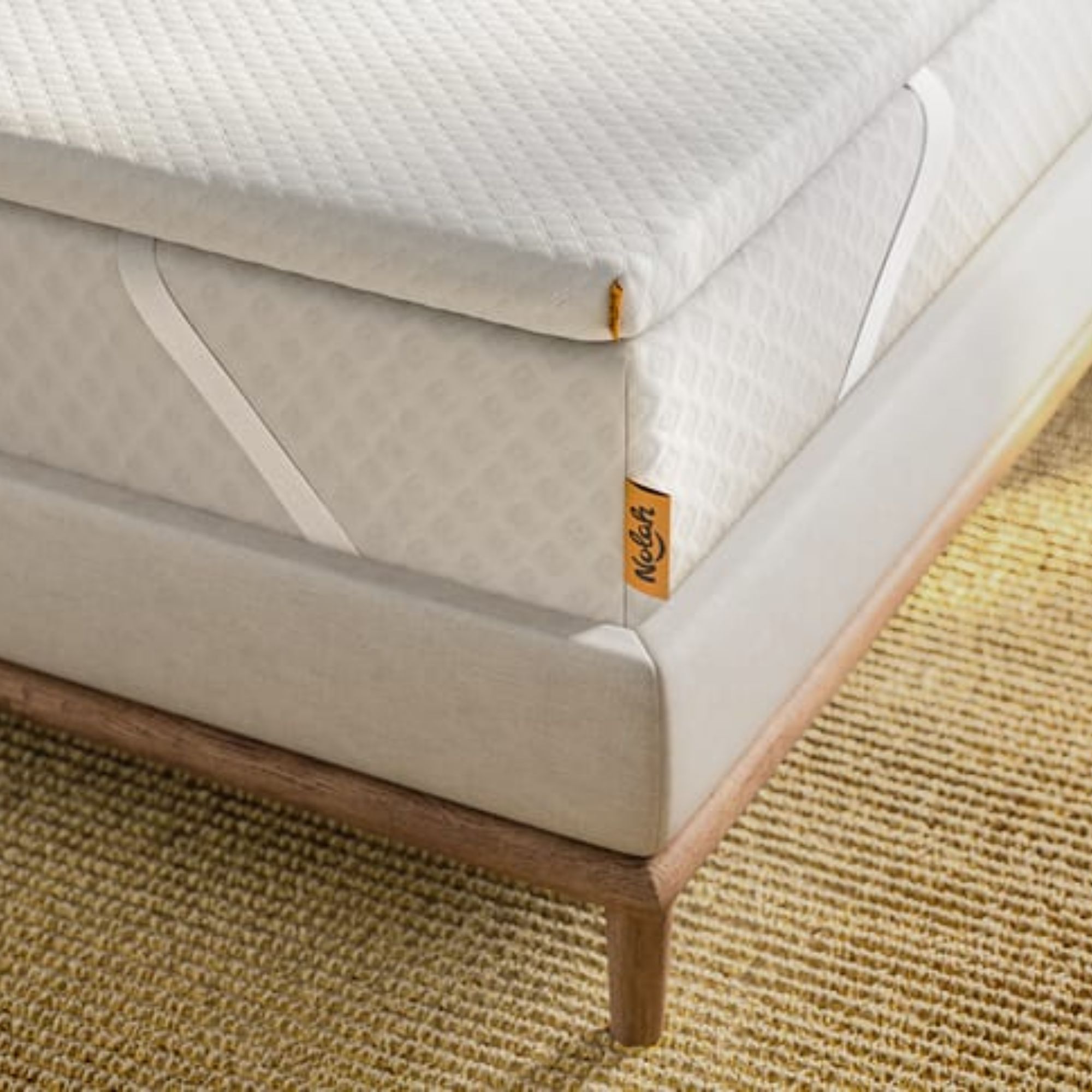
Most memory foam mattress toppers feel soft and squishy, but the Nolah Mattress Topper is firm and supportive: just the thing to toughen up a sagging mattress. The perforations throughout the AirFoam help to keep things cool, and expert tester Jamie Davis Smith still raves about the edge support. Just make sure you wait 24 hours to sleep on it until the smell of the mattress off-gassing has dissipated.
You can find more detail in our Nolah Mattress Topper review.
Latex
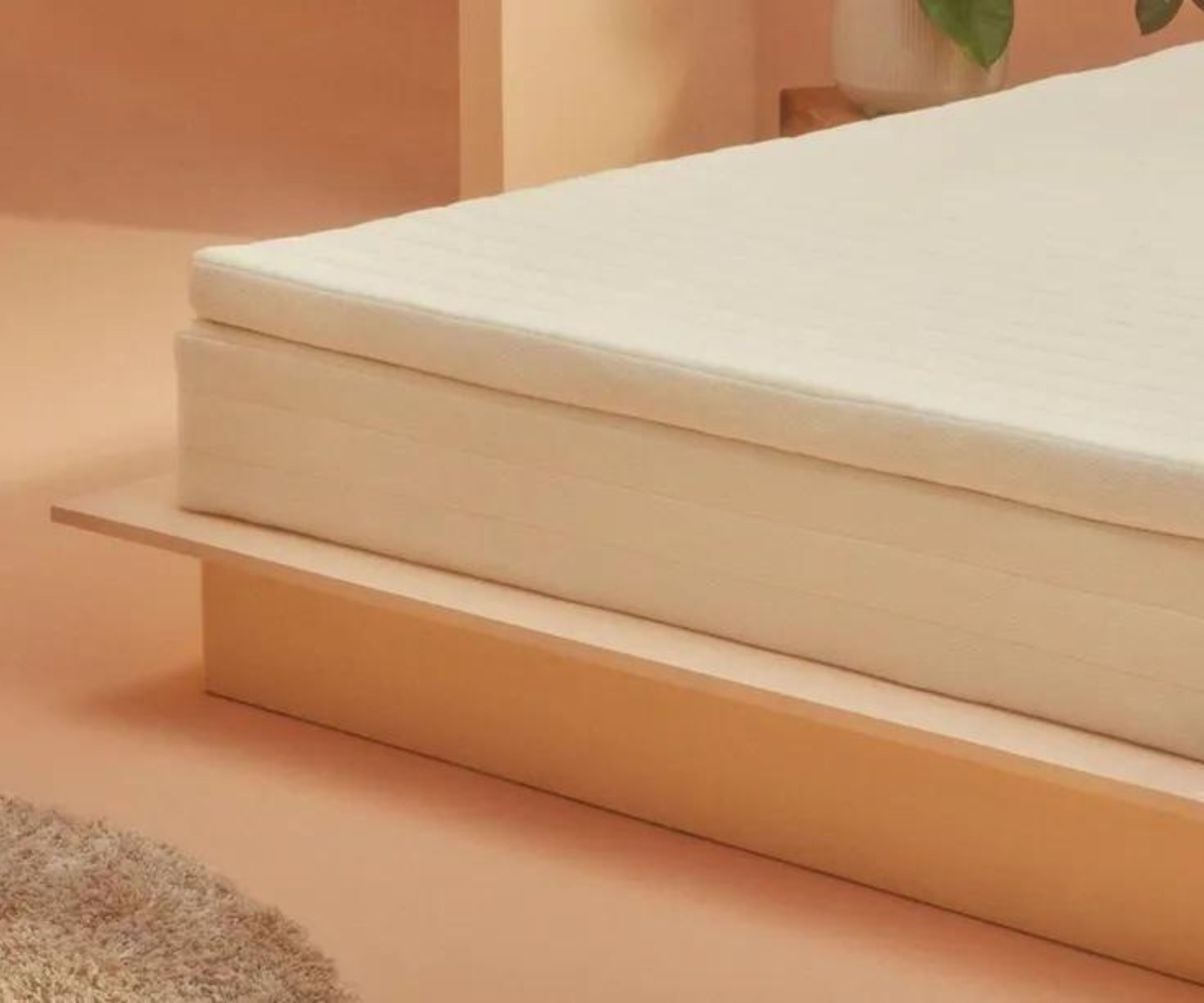
Best for: eco-conscious shoppers
Pros: breathable; durable; supportive
Cons: expensive; heavy
There are two methods of producing latex. The Dunlop method involves vulcanization: hardening the latex through a combination of heat and sulfur. This makes it stronger and more supportive. The Talalay method involves freezing the latex into a mold, then infusing it with carbon dioxide to create little air bubbles. This makes it springier and more responsive.
How your latex mattress topper feels depends on whether it's filled with Dunlop or Talalay latex. I'd use Dunlop latex to lend more support to a sagging mattress and Talalay latex to take the edge of an overly firm mattress. Both types of latex are highly breathable and ultra-durable. Take good care of your latex and it could last you as long as 20 years. That's why it's so good to sleep on latex.
There are two major downsides to using latex in your mattress topper: the weight and the cost. You might want to ask a friend or family member to help you unbox your latex mattress topper and get it onto the bed. The cost is unavoidable, especially of you go organic, but that's the price you have to pay for sustainable materials.
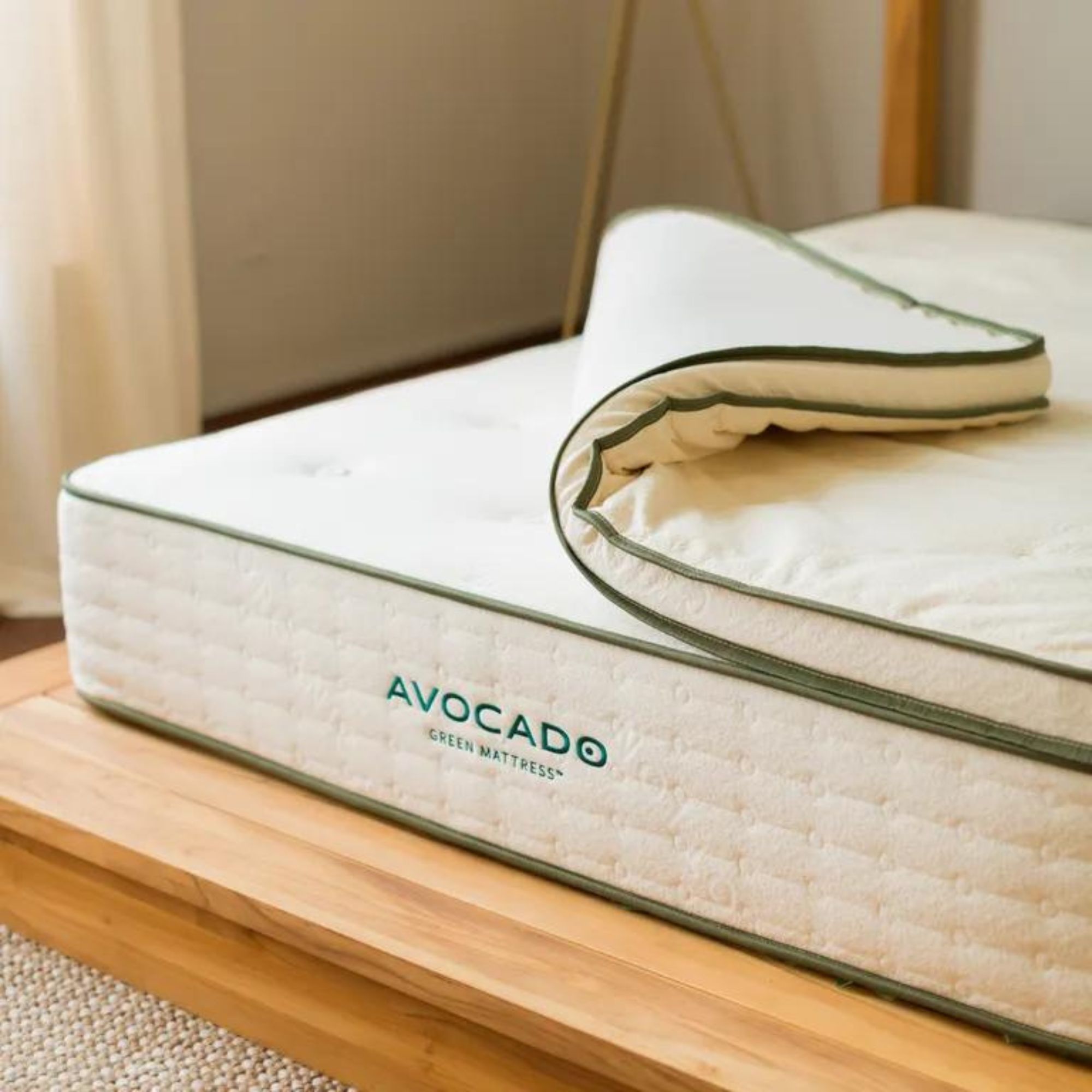
The Avocado Organic Latex Mattress Topper recently relaunched in two heights and two firmness levels to suit every sleep style. I'd recommend the Plush Talalay latex topper for anyone who sleeps on their side or suffers with aches and pains, and the Medium Dunlop topper for anyone whose mattress needs a little more support.
You can find more detail in our Avocado Organic Latex Mattress Topper review.
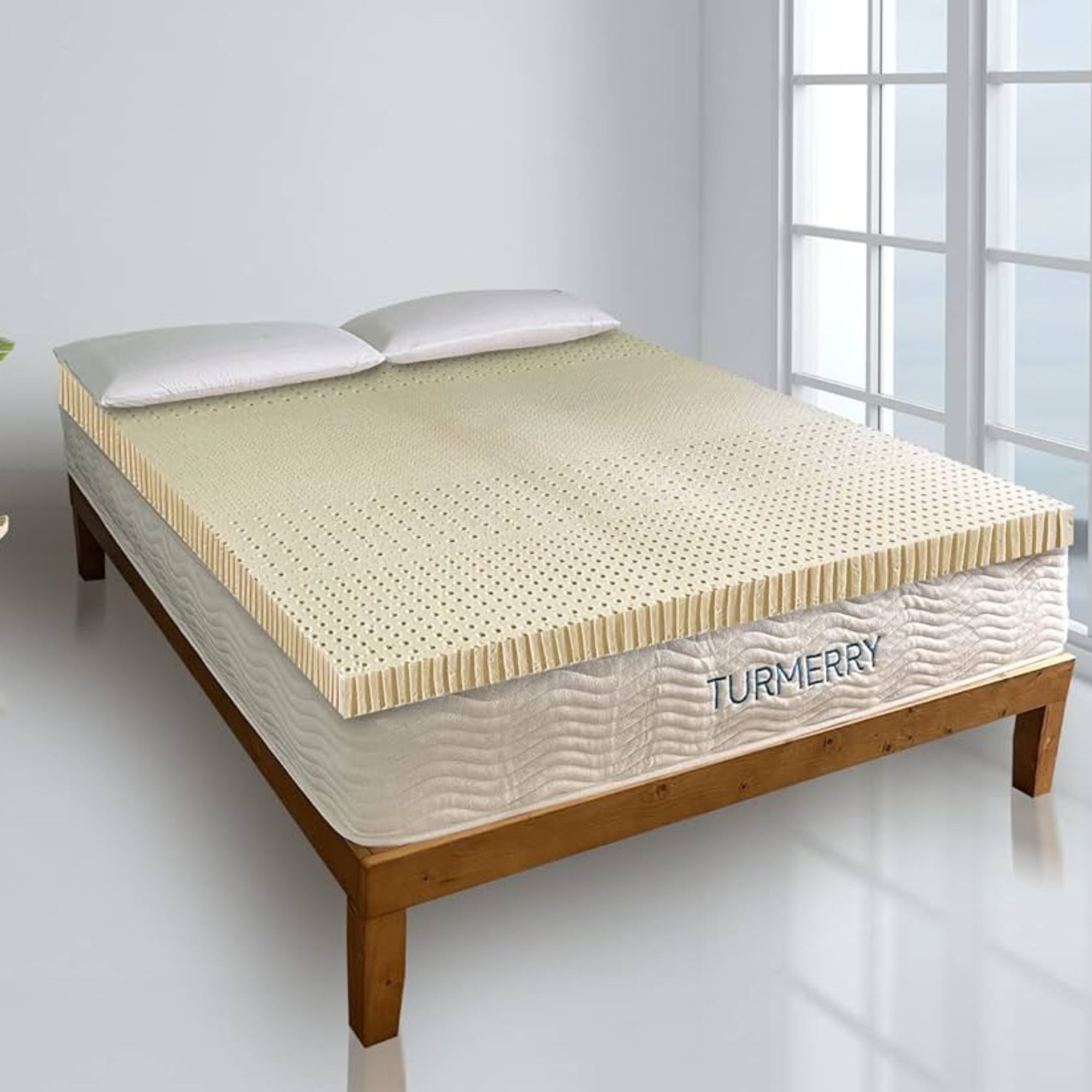
'The bouncy feel of latex is responsive and distinct from memory foam,' says expert tester Jamie Davis Smith: 'I actually found it far more comfortable. I never woke up with aches or pains. In fact, the topper arrived just as a heatwave was hitting, and it kept me cool on sweltering nights. I think it's one of the best mattress toppers on the market.'
You can find more detail in our Turmerry Latex Mattress Topper review.
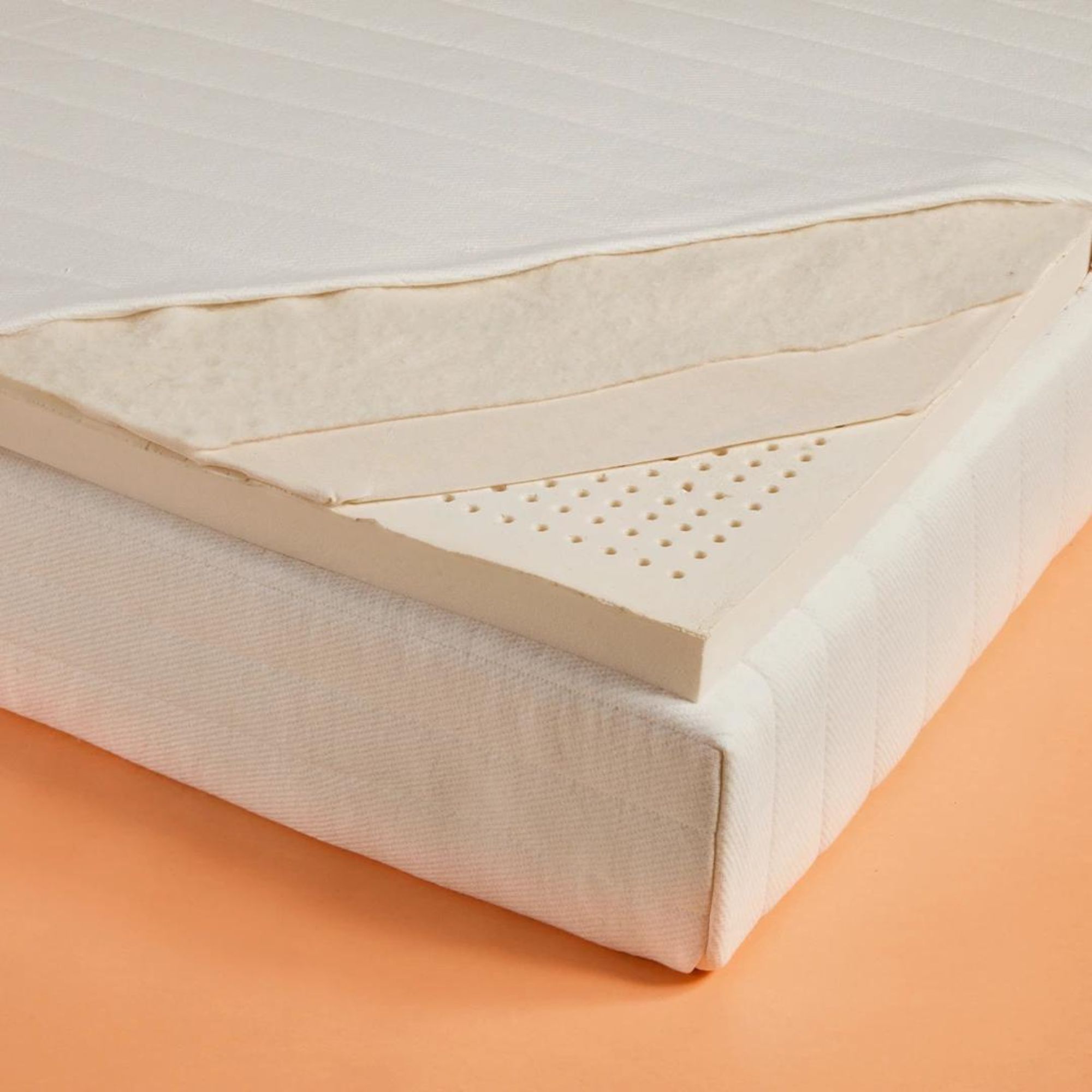
'Right before I started testing the Earthfoam Mattress Topper, I was sleeping on a five-inch memory foam topper, and I couldn't wait to get rid of it,' says expert tester Louise Oliphant. 'I found that this organic latex layer has more bounce and less depth than memory foam, with far superior cooling and sustainability stats.'
You can find more detail in our Earthfoam Mattress Topper review.
Feather and down
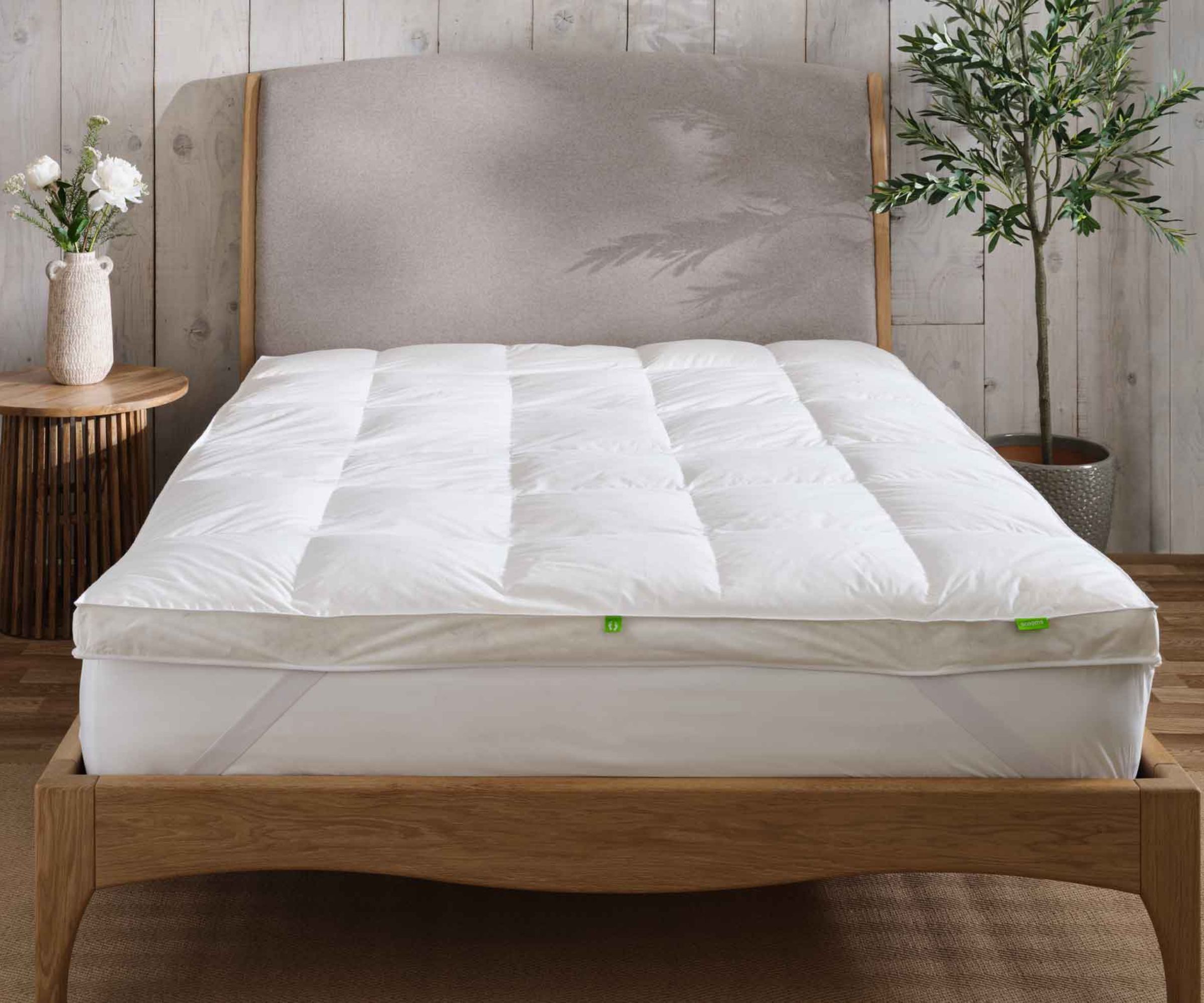
Best for: pillowy comfort
Pros: soft and squishy; great for side sleepers
Cons: not especially supportive
A feather and down mattress topper, also known as a featherbed, is what you get when you cross a comforter with a mattress topper. These thick, fluffy layers feel soft and squishy, offering plenty of comfort, but little support.
I might layer a feather and down mattress topper over a firm, inflexible mattress. If you're a side sleeper, then you'll appreciate the extra bit of give to contour around your curves and keep your spine straight. If you sleep on your back or your stomach, you need something more supportive.
Featherbed mattress toppers tend to keep cool, and they're relatively inexpensive, but they're a little high-maintenance. You'll need to give them a good shake every so often to fluff up the feathers and smooth out any lumps and bumps. It goes without saying, but if you're allergic to feathers or you prefer not to purchase animal products, then you'll need to look for another type of mattress topper.
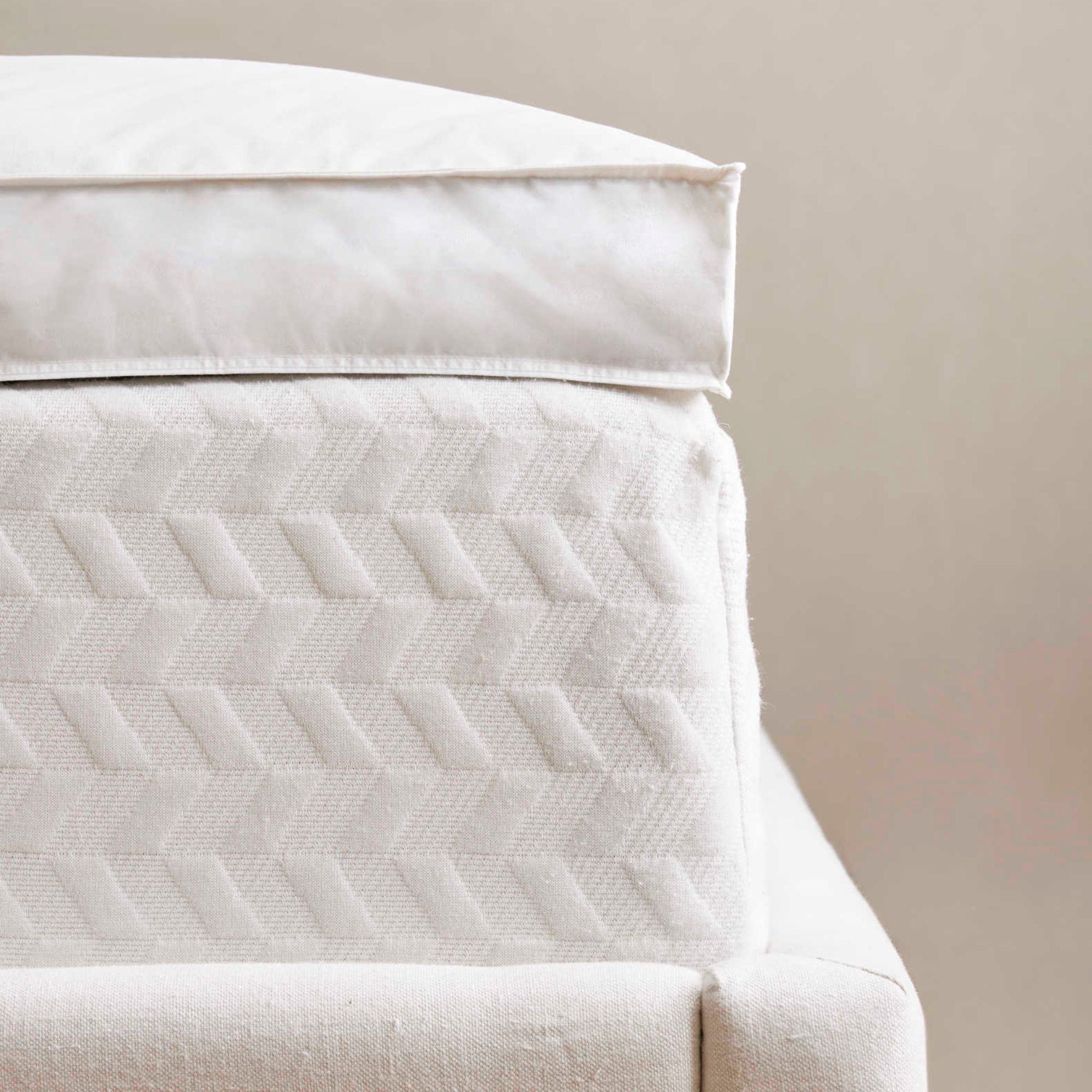
This featherbed boasts a 4.7 average star rating from 72 reviews. 'It's extremely lush and comfy,' says one recent reviewer. 'I didn't know if it would be too squishy and too soft but I've found it very comfortable. I'm eight months pregnant and I've definitely been sleeping better. The only thing is that it gets hot, as down tends to trap heat.'
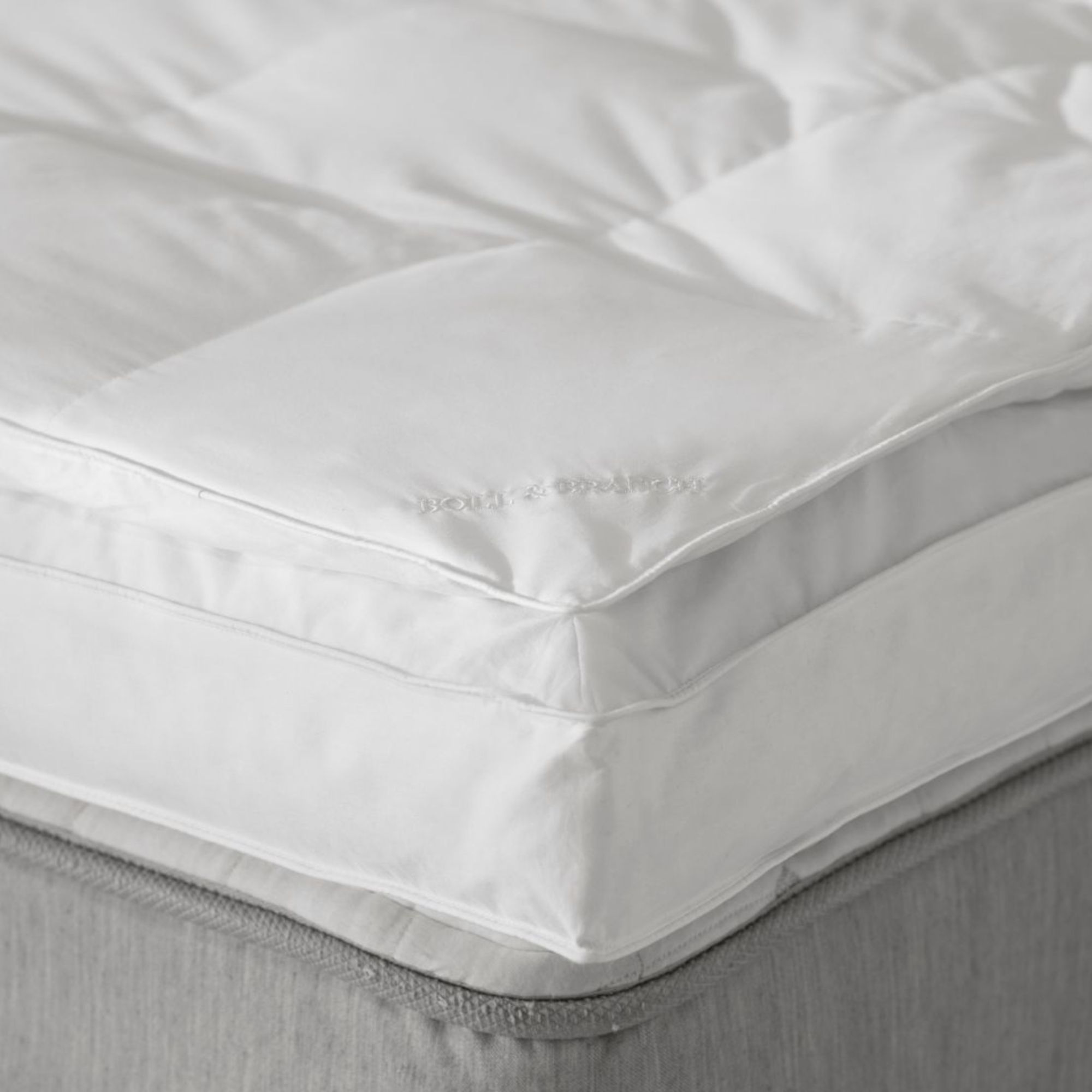
This feather bed is filled with responsibly sourced down, as authenticated by the RDS, and wrapped in organic cotton. It's a good option for eco-conscious sleepers in need of some plush comfort. The top layer is filled with down for natural loft and the bottom chamber is filled with feathers for more support.
FAQs
Will a mattress topper help?
If you're struggling to sleep on a mattress that feels too firm or too soft, then a mattress topper could help to change the look and feel of the mattress to make it more comfortable for you.
There is a mattress topper type to meet every sleep need. I'm talking cooling mattress toppers for hot sleepers, firm mattress toppers for back and stomach sleepers, and plush pillow tops for side sleepers. Follow my mattress topper buying rules and you won't go far wrong.
However, if your mattress is past its prime, then a mattress topper won't help. The only way to fix a sagging mattress is to return it to the manufacturer for repair.
Can a mattress topper be washed?
As H&G's resident sleep writer, I'm often asked: 'can a mattress topper be washed?' My answer depends on the mattress topper type. Memory foam cannot be washed in the washing machine and must be spot-cleaned. Featherbeds, as well as polyester or cotton toppers, can go in the washing machine, as long as you use a gentle detergent. If in doubt, always check the laundry symbols of the care label.
Even the best mattress topper should only ever be a short-term fix. If you've had your mattress for seven years or longer, and you're noticing sagging or loss of support, then your money would be better spent on the best mattress. I've outlined the pros and cons of all the major mattress types for your consideration.
Sign up to the Homes & Gardens newsletter
Design expertise in your inbox – from inspiring decorating ideas and beautiful celebrity homes to practical gardening advice and shopping round-ups.

Emilia is our resident sleep writer. She spends her days tracking down the lowest prices on the best mattresses and bedding and spends her nights testing them out from the comfort of her own home. Emilia leads a team of testers across America to find the best mattress for every sleep style, body type, and budget.
Emilia's quest to learn how to sleep better takes her all around the world, from the 3Z mattress factory in Glendale, Arizona to the Hästens headquarters in Köping, Sweden. She's interviewed luxury bedding designers at Shleep and Pure Parima, as well as the Design Manager at IKEA. Before she joined Homes & Gardens, Emilia studied English at the University of Oxford.
-
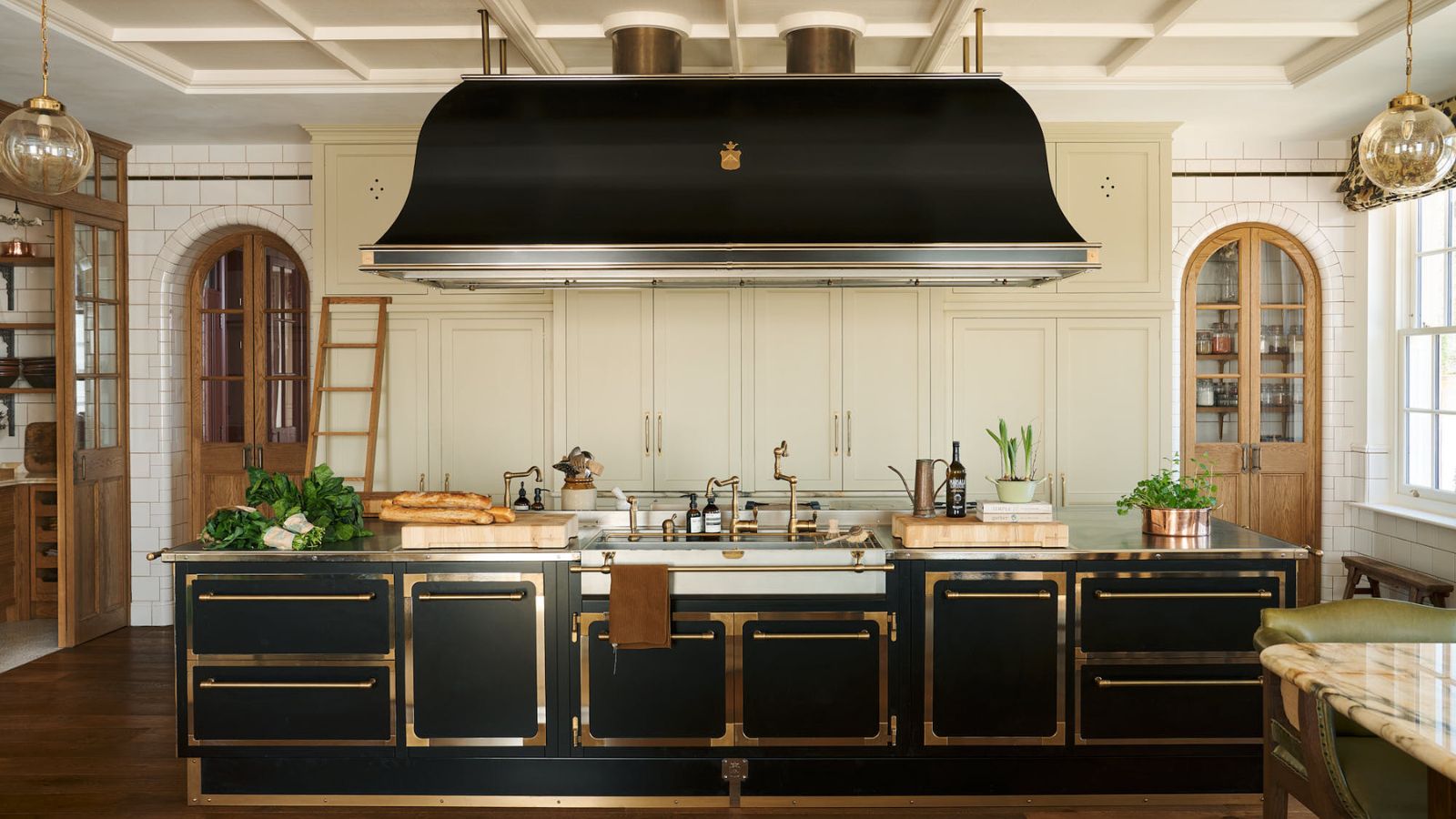 This $11 non-toxic 'magic' soap cleans everything – it's biodegradable, works great in hard water areas, and lasts for years
This $11 non-toxic 'magic' soap cleans everything – it's biodegradable, works great in hard water areas, and lasts for yearsIt can easily replace most of your cleaning products
-
 David Harbour's modern Bohemian living room is an inspired reimagining of this '70s design trend – 'sometimes you just need to stop worrying about what goes with what'
David Harbour's modern Bohemian living room is an inspired reimagining of this '70s design trend – 'sometimes you just need to stop worrying about what goes with what'David Harbour's home is a riot of personality and character – and it is so easy to recreate with one-of-a-kind, eclectic, and mismatched pieces
-
 Manifest a cozy, comforting, and nostalgic Ralph Lauren-inspired home with these 12 aesthetic pieces that scream old money
Manifest a cozy, comforting, and nostalgic Ralph Lauren-inspired home with these 12 aesthetic pieces that scream old moneyAs timeless as it gets, the Ralph Lauren aesthetic is making a serious comeback in 2025
-
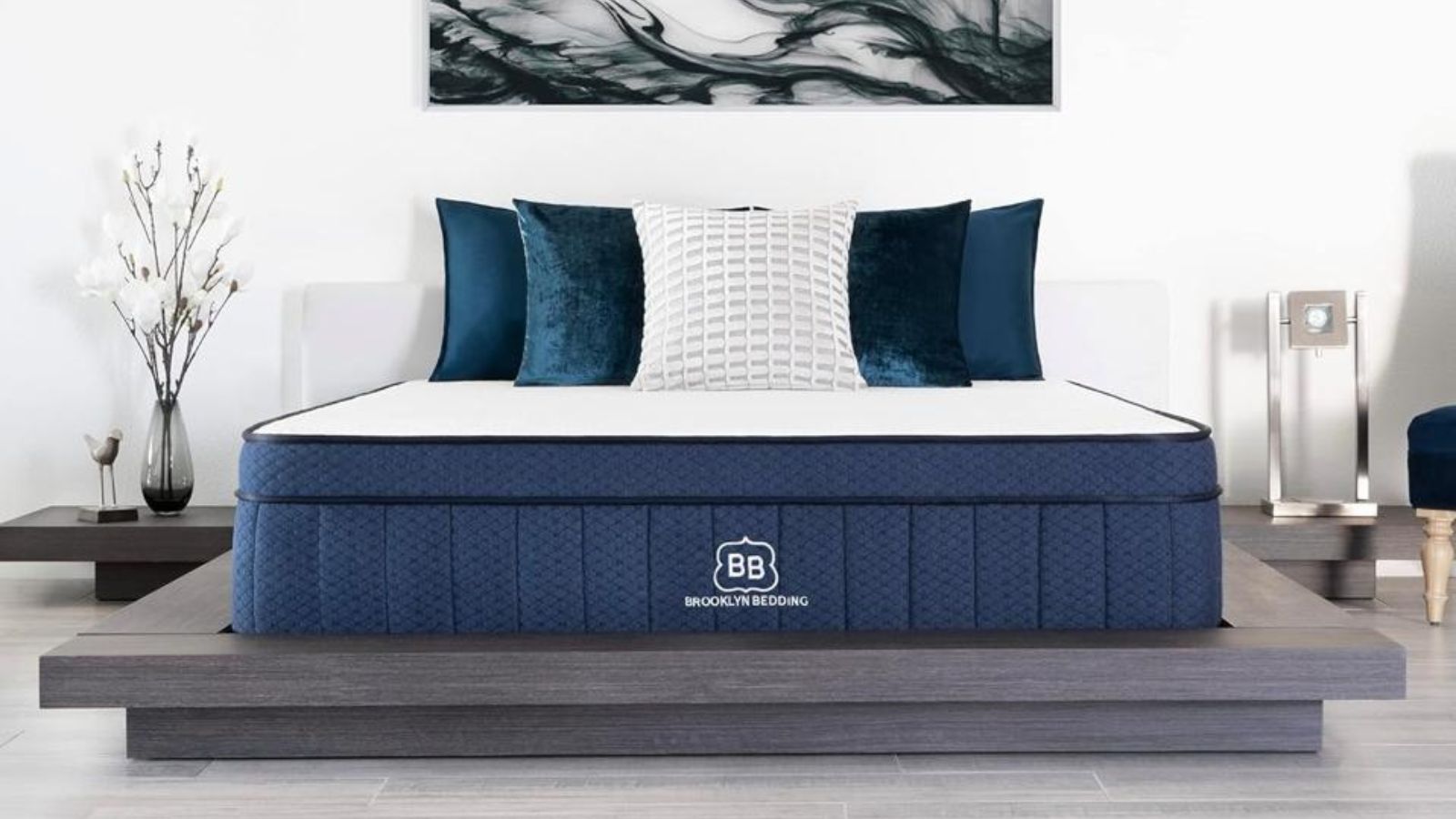 Not many mattresses actually feel cool to the touch − this one does
Not many mattresses actually feel cool to the touch − this one doesI spent 6 months sleeping on the Brooklyn Bedding Aurora Luxe Cooling Mattress – I give it top marks for pressure relief, though the motion isolation needs work
-
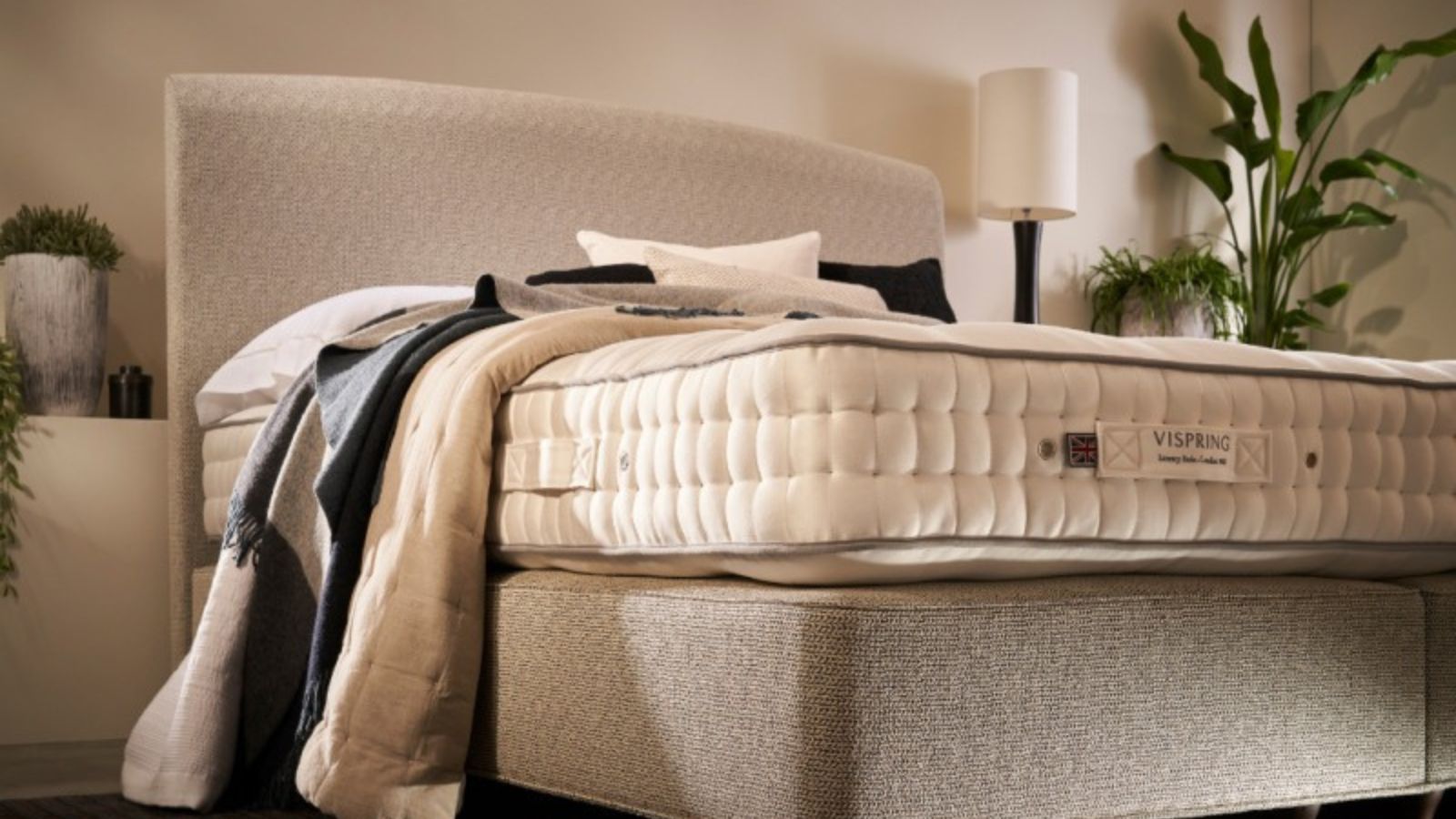 Princess Diana slept on a Vispring mattress, so I slept on a Vispring mattress − and I think it's worth the hype
Princess Diana slept on a Vispring mattress, so I slept on a Vispring mattress − and I think it's worth the hypeI visited their flagship showroom in central London to learn more about how a Vispring mattress gets made and whether it's really worth the price
-
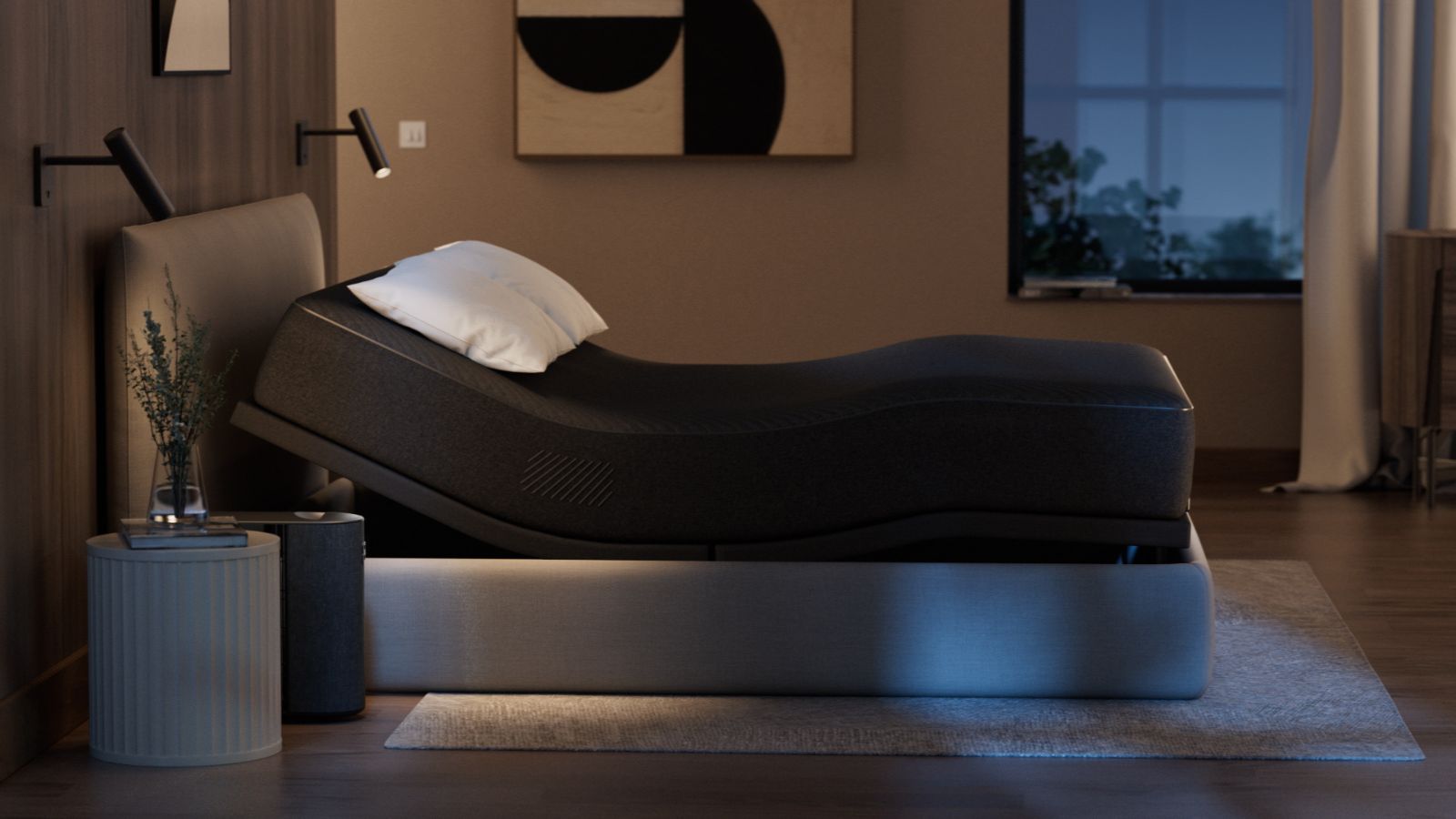 Tech moguls and elite athletes use this intelligent sleep system – I think it's worth the hype
Tech moguls and elite athletes use this intelligent sleep system – I think it's worth the hypeI tested the Eight Sleep Pod 4 for two months − I rate the thermoregulation and the vibrational alarm, though I can't justify the subscription fees
-
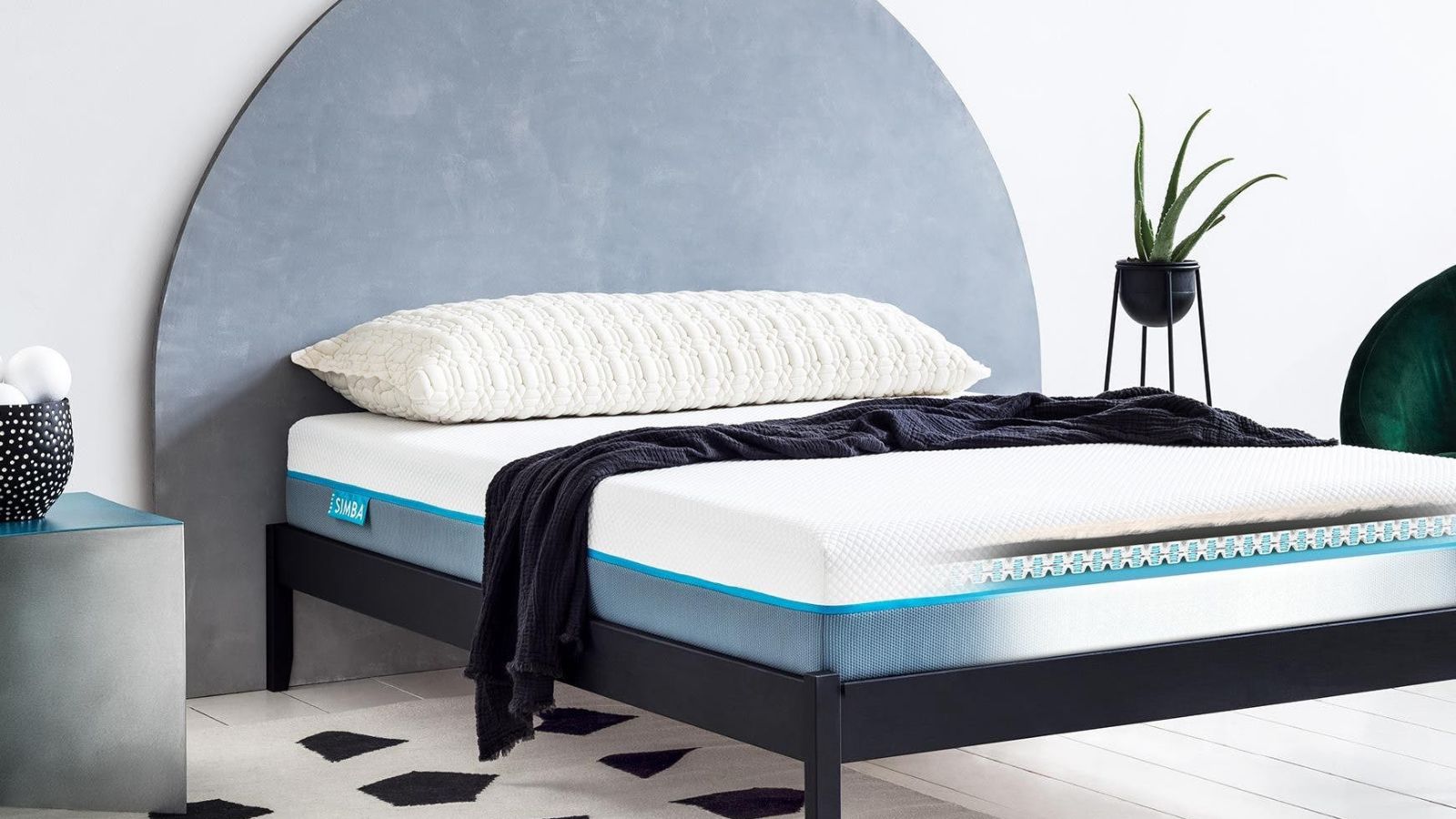 I thought I only liked 'extra firm' mattresses until Simba's Hybrid Pro changed my mind
I thought I only liked 'extra firm' mattresses until Simba's Hybrid Pro changed my mindPlush up top yet solid and supportive down below, the Simba Hybrid Pro Mattress is a great option for side sleepers and anyone who needs pressure relief
-
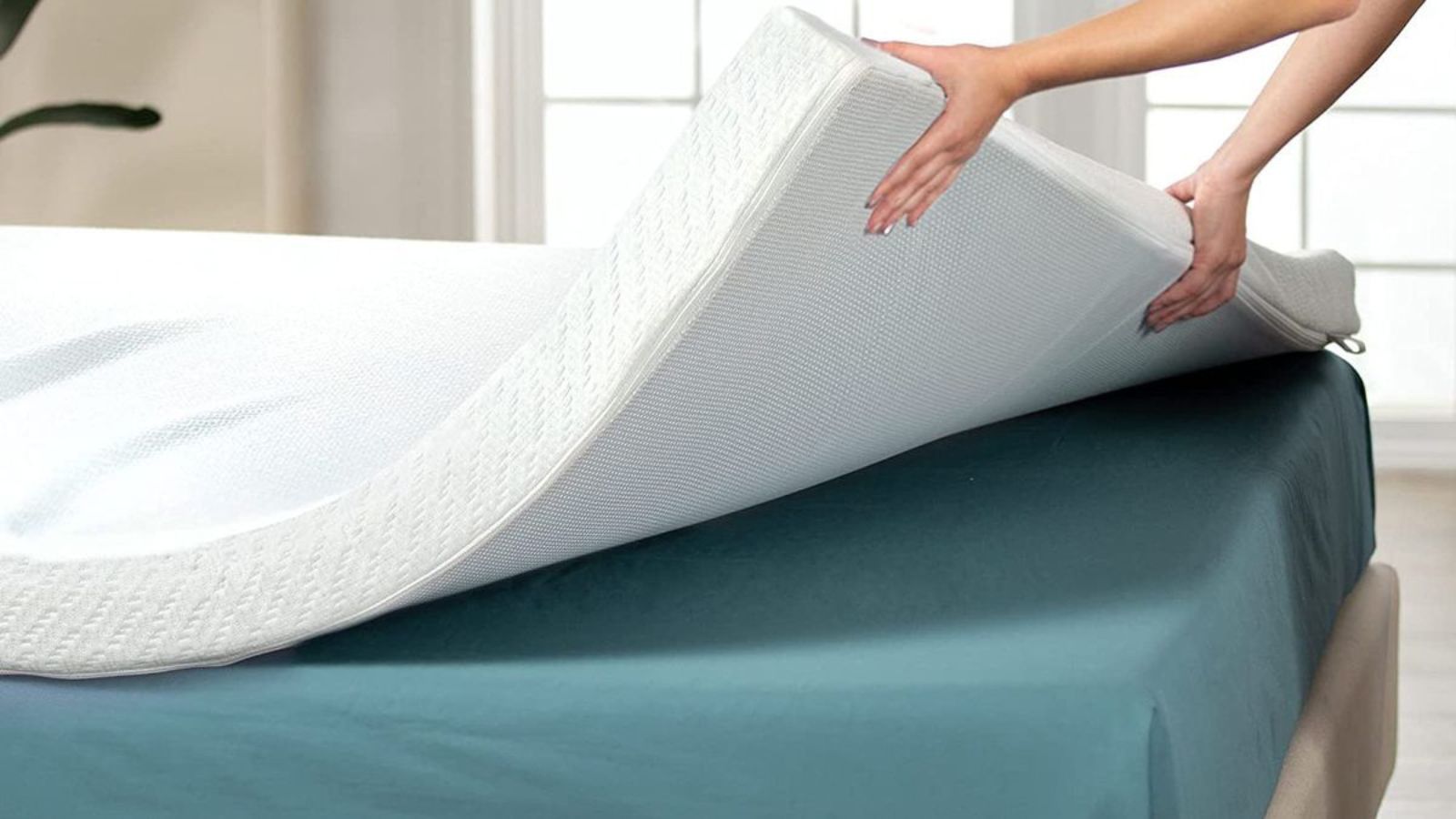 Struggling to sleep away from home for the holidays? This best-selling memory foam mattress topper works magic on any tired mattress
Struggling to sleep away from home for the holidays? This best-selling memory foam mattress topper works magic on any tired mattressThe Linenspa Memory Foam Mattress Topper excels at pressure relief and thermoregulation – and it's ultra-affordable in the mattress sales
-
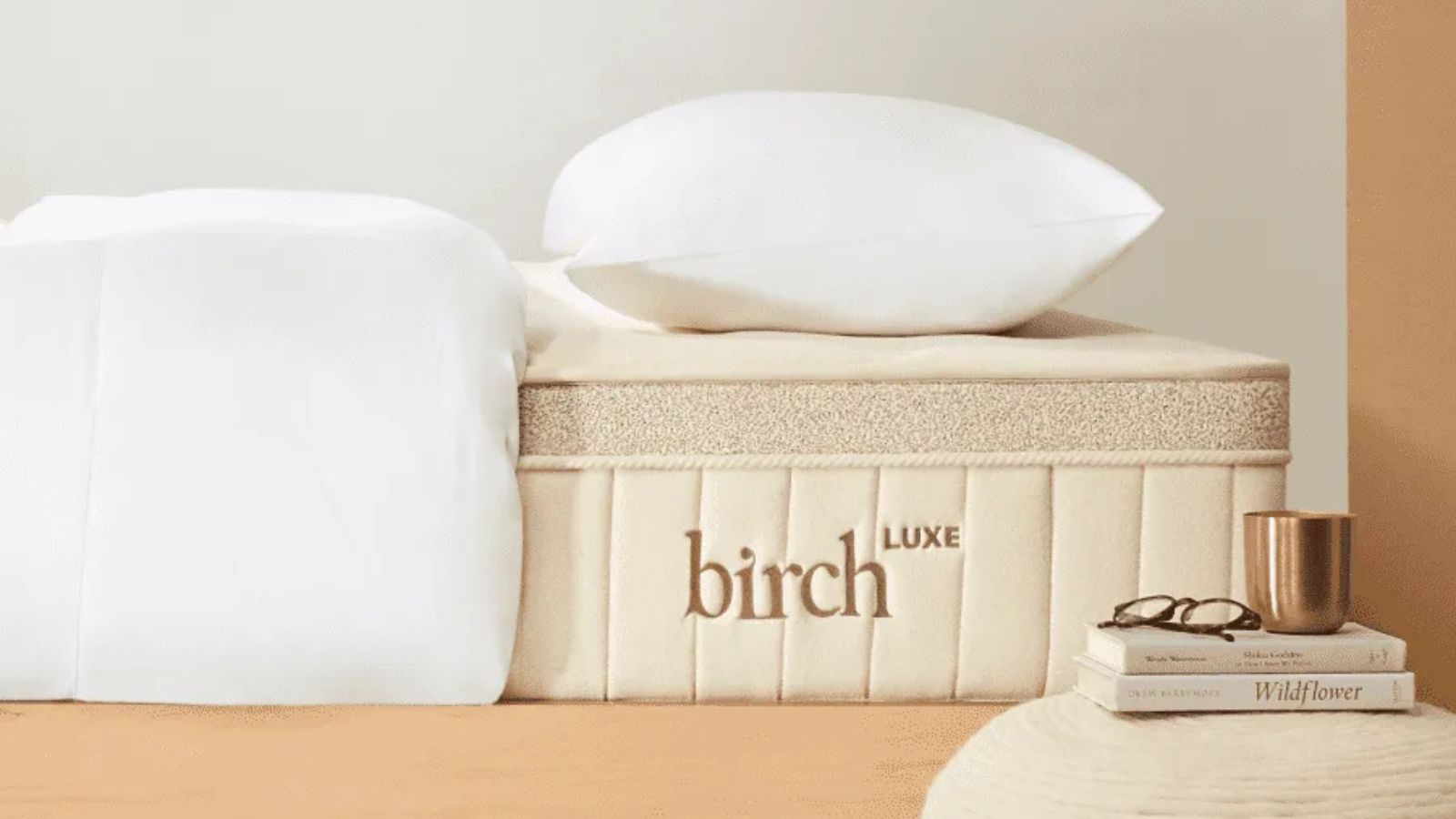 These are the 3 best organic mattress toppers I've ever tested – an essential for clean and comfy sleep
These are the 3 best organic mattress toppers I've ever tested – an essential for clean and comfy sleepI've reviewed and ranked 3 of the best toppers from Avocado, Birch, and Earthfoam to help you choose wisely and sleep better, naturally
-
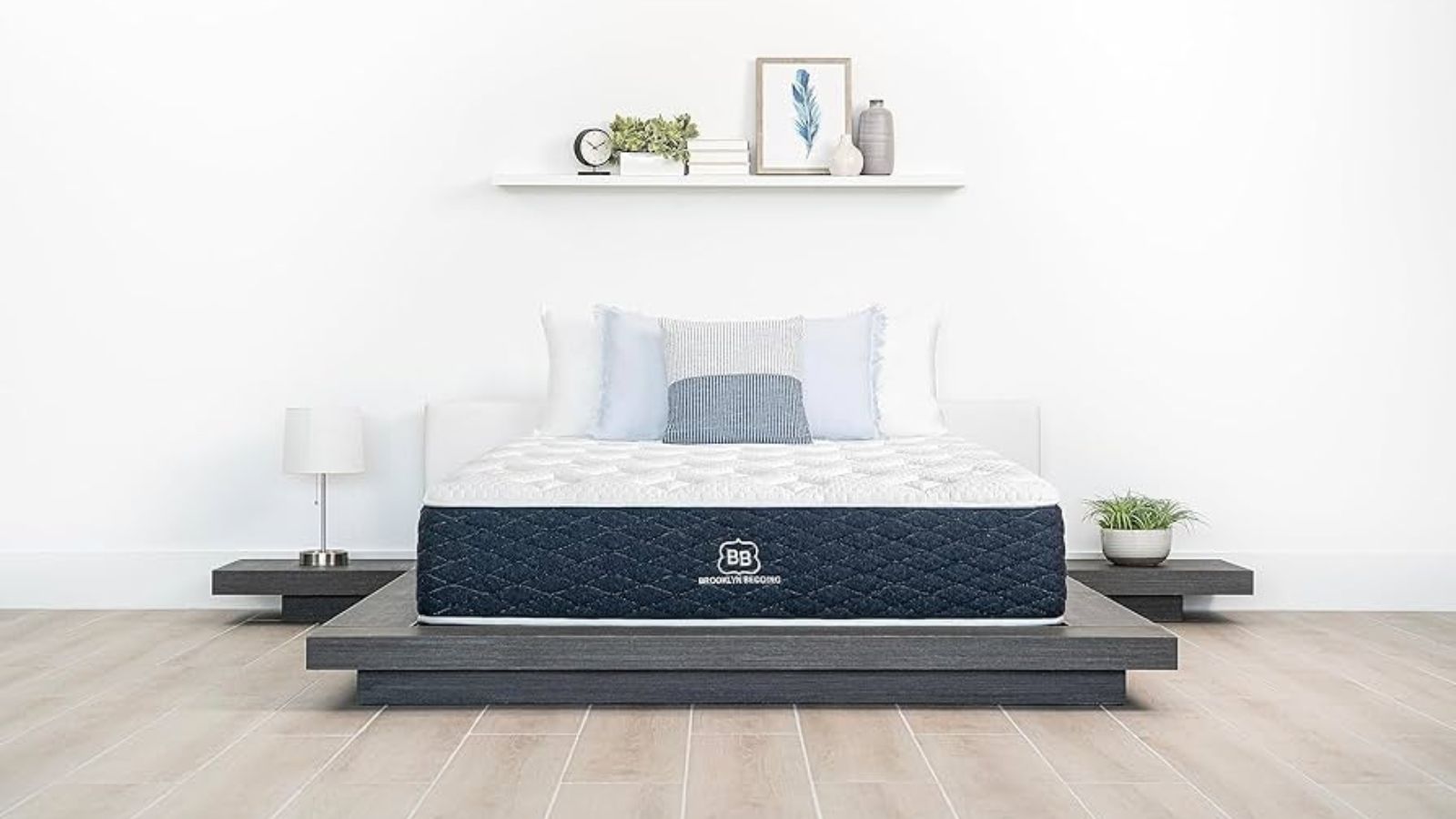 Not many mattresses are supportive right down to the edges − but this one is
Not many mattresses are supportive right down to the edges − but this one isI spent the summer sleeping on the Brooklyn Bedding Signature Hybrid Mattress – the edge support is excellent, if you can tolerate the motion transfer
